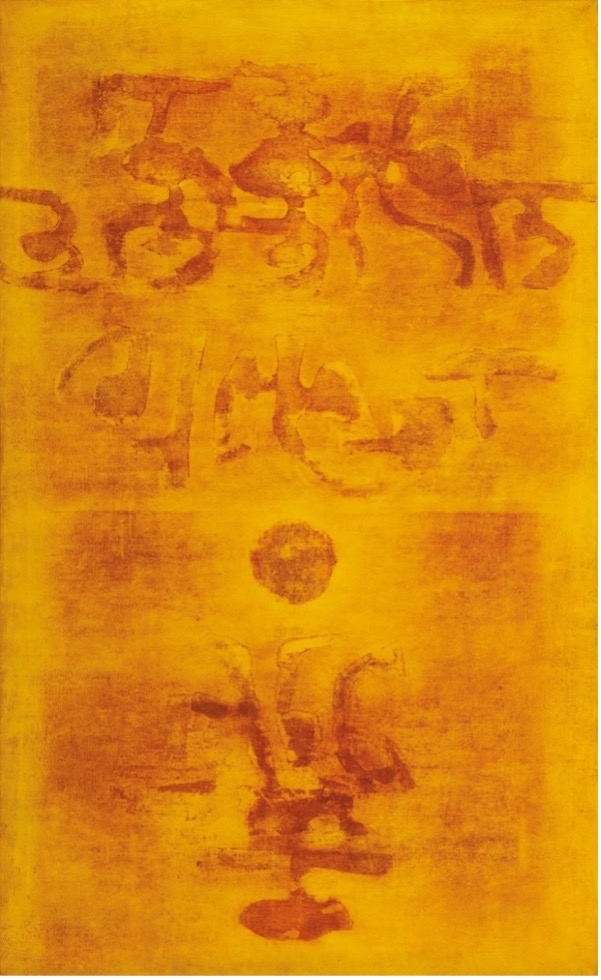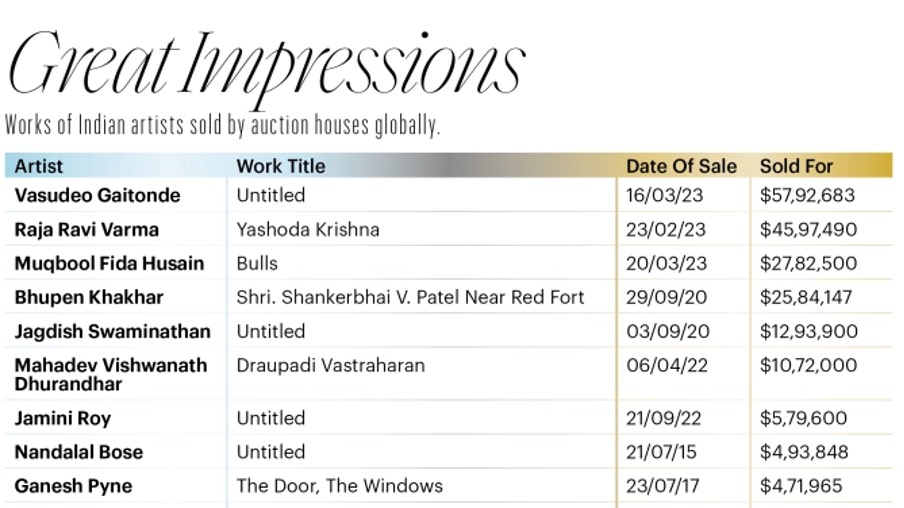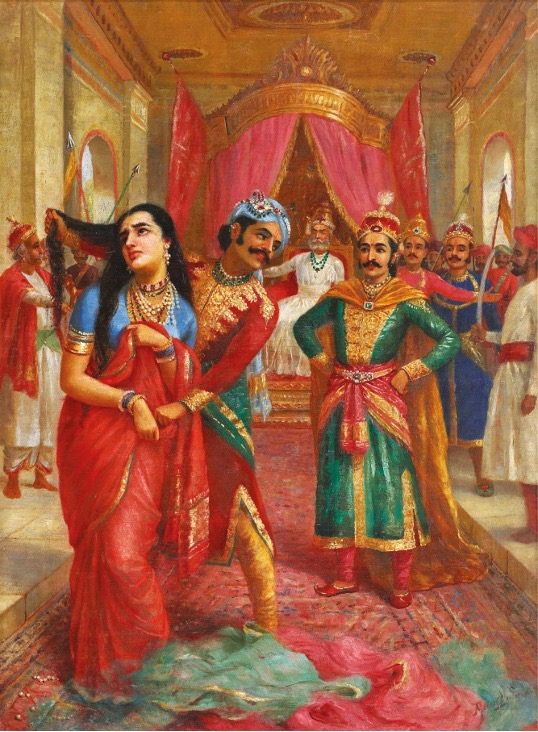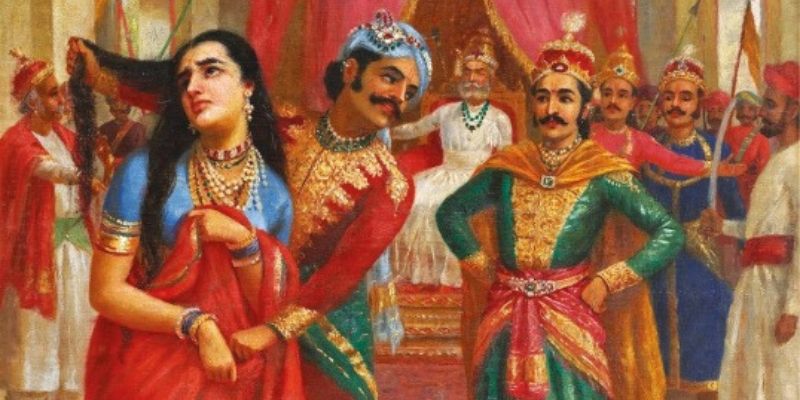Art auction houses, which saw a slump in business a decade ago, are uncorking the bubbly and celebrating a red-hot market today. Close to 60% of the works sold this year in March went for prices higher than upper estimates, according to the Indian Art Investor, an art market advisory based in Delhi. Gallerists, auctioneers and collectors agree that as a fast-growing asset class, Indian art is at an inflection point for even higher valuations, since the pandemic.
At a sale conducted by AstaGuru in March, a large 40” x 60” watercolour painting by Paresh Maity was expected to fetch ₹8-10 lakh. But when the hammer came down, the winning bid closed at a little over ₹40 lakh. The rise has been exponential considering that in June 2022 a watercolour work of a similar size by the same artist sold for ₹33.7 lakh at another auction.
And it’s not Maity alone who is seeing an upward movement in prices. We are now a market of about ₹3,000 crore, or $400 million, in terms of registered auction sales, so we have moved up 600 times in less than three decades. That’s still a fraction (less than half a per cent) compared to the global market size of $70 billion.

Financial experts agree. There appears to be an arbitrage (opportunity) available around Indian art as the sector is undervalued vs Western peers.
Typically, every year in March, sales tend to peak and slow down. This year, there has been an acceleration. FY23 was the highest-selling year for auction houses as far as Indian art is concerned. Another indicator of sales is the opening of new galleries in Mumbai. Several have opened their second spaces, while some galleries from other cities are also opening their branches in Mumbai.

New Artists in Demand
Raqib Shaw who has been picked up by White Cube London and sells his works in the range of ₹2.5 crore to ₹5 crore; Nikhil Chopra has signed with Gallerie Continua in Paris and his works sell for ₹12 lakh to ₹40 lakh, while Shakuntala works with Kolkata-based Chemould art gallery, and his works are priced between ₹10 lakh and ₹50 lakh; Young Mumbai artist Parag Tandel’s works, ranging from ₹5 lakh to ₹20 lakh, was acquired by the Nita Mukesh Ambani Cultural Centre in Mumbai recently.
Artists Estimated to See Values Soar in the Coming Years
Though experts are divided on the matter, G.R. Santosh, the pioneer of Tantra, Madhvi Parekh, who brought tribal and folk themes to the mainstream, and K.K Hebbar, whose works capture the life of the common man, could be the frontrunners.

But for a $ 3 trillion economy, the art market ought to be at least six times of what it is now. There are less than 500 serious buyers at auctions who buy pieces priced between ₹50 lakh and ₹1 crore.
Given that India ranks third in the world in terms of self-made billionaires, why is the number so low?
Awareness is growing, aided by the increase in the number of auctions, galleries and museums, says Anand. The art market in India is expected to grow at a CAGR of 20%. The other, which is more of a cultural phenomenon, is also witnessing a shift. If you look at the wealth of billionaires in Europe and America, 70-80% is in art and 20% in other asset classes. It’s the opposite in India, but it is shifting slowly.
Big-ticket billionaire collectors say momentum also means bigger opportunities. The high prices seem to be sustaining for a lot longer than the usual cycle. The values of a select few modern artists are seeing incredible growth. At the moment it appears to be a seller’s market. One must look for artworks of high quality with impeccable provenance.
There has been a correction in the past decade, which is partly responsible for the turning tide. There are new collectors who want to populate their collections and marque names across genres will come at a premium and even rise.
The golden age of Indian art has just begun it seems.
(For the full report refer to the India Art Investment Annual Report. Click Here)
Read Also:
Top Artists To Watch In 2023 Amid The Indian Art Market’s Exponential Growth

Contributor





